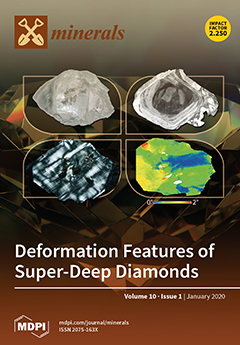We applied geochemical (ICP-MS, WD-XRF, GFAAS, and AMA 254) and mineralogical (EPMA) studies of 137 samples to ore mineralization from Middle-Triassic sediment-hosted Zn-Pb (Mississippi Valley-type MVT) and Lower Zechstein sediment-hosted stratiform (SSC) Cu-Ag (Kupferschiefer-type) deposits in Poland. They contain a number of trace elements which are not recovered during the ore processing. Only Cu, Ag, Pb, Ni, Re, Se, Au, and PGE are extracted from Cu-Ag deposits while Zn and Pb are the only elements produced from Zn-Pb deposits. Zn-Pb deposits contain Cd, Ag, Ga, and Ba in slightly elevated concentrations and have potential to be mineral resources. This applies to a lesser extent to other trace elements (Bi, As, Hf, Tl, Sb, Se, and Re). However, only Cd and Ag show high enrichment factors indicative of potential for recovery. The bulk-rock analyses reveal strong correlations between Zn and Cd and Se, As and Mo, and weaker correlations between Ag and Cd, as well as Ga and Zn. Electron microprobe analyses of sphalerite revealed high concentrations of Cd (≤2.6 wt%) and Ag (≤3300 ppm). Zn-Pb deposits have fairly significant estimated resources of Ga and Sc (>1000 tons) and Cd (>10,000 tons). The Cu-Ag deposits have element signatures characterized by high values of Co, V, Ni, and Mo and much lower of Bi, As, Cd, Hg, Mo, Sb, and Tl. Bulk-rock analyses show strong correlations between Se and V; As and Co; Bi and Re; and weaker correlations between, for example, Cu and Mo; V, Ni, Ag and Mo; and Ni, V, and Co and Ni. The EPMA determinations reveal strong enrichments of Ag in Cu sulfides (geerite ≤ 10.1 wt %, chalcocite ≤ 6.28 wt %, bornite ≤ 3.29 wt %, djurleite ≤ 9080 ppm, yarrowite ≤ 6614 ppm, and digenite ≤ 3545 ppm). Silver minerals and alloys, as well as the native Ag and Au, were recorded in the Cu-Ag ores. Large resources of Co, V, and Ni (>100,000 tons) and Sc and Mo (>10,000 tons) are notable in Cu-Ag deposits. A number of trace elements, classified as critical for the economy of the European Union, including Ga and Ba (to a lesser extent Hf, Nb, and Sc) in Zn-Pb deposits, and Co and V in the Cu-Ag deposits, may eventually be recovered in the future from the studied deposits if proper ore-processing circuits and increasing demand are favorable.
Full article





